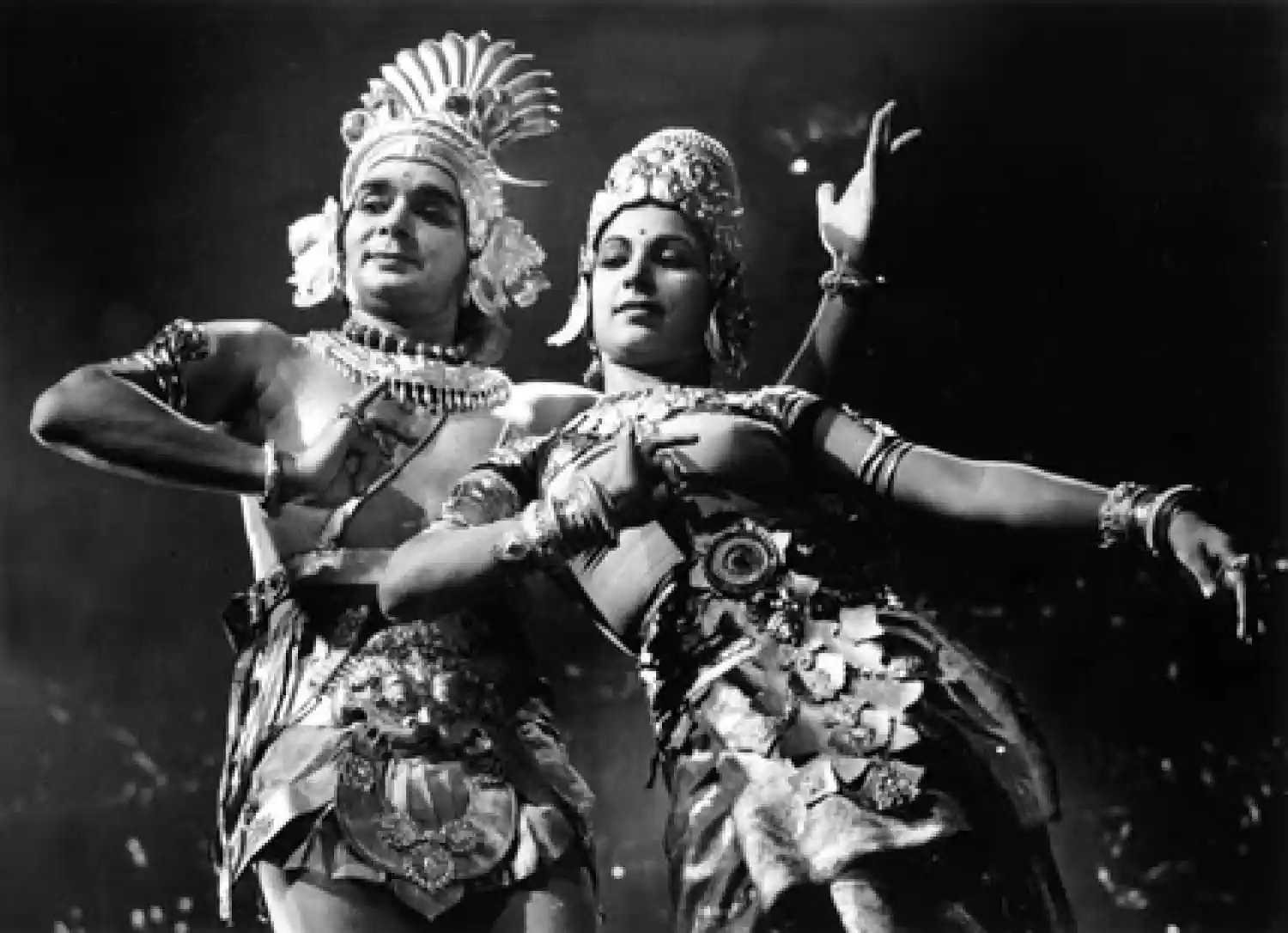Maestro of Modern Indian Dance
Uday Shankar, the eminent dancer and teacher was the father of modern Indian dance who pushed Indian dance forms to international recognition and limelight.

Maestro of modern Indian dance, he is Uday Shankar; Image Source: Oldindianphotos.in
His mother would often get him dressed as a girl and watch him dance around her, as she never got the fortunes of having a daughter. Uday would start jumping and moving in an exhilarated mood around his mother as she would cheer him dancing. Dance never left his heart, and though the audience was not the same as his childhood, Uday Shankar was now performing in front of the dignitaries of international acclaim.
Indian classical dance forms and their modern representation is credited to the one and only, Uday Shankar Ji. The decade 1930 was the most happening decade for Indian art and dance forms. Uday Shankar proved to be an emerging catalyst in introducing a new style of dance and its depiction of stories. He became the first performer to fuse Indian classical dance with the theatrical aspects added to it, namely, Indian ballet!
Indian art and sculpture, proved to be an impressive trove of treasure for Uday Shankar, as he admitted that he would often dive deep into the art forms of the ancient Indian era, varying from Rajput art to Mughal painting in the British museum to the cave art of Ellora to imbibe its essence in his modern dance ballets to mirror ancient India on stage.
Dance as a profession was still not looked upon with respect in India, so Uday pursued fine arts as his father suggested, from J. J. School of Art and Gandharva Mahavidyalaya. He followed his father to London who was exploring the areas of entertainment management there. Uday was not a trained dancer, but when he met the distinguished Russian ballerina Anna Pavlova, he knew he was meant to dance on stage.
Uday Shankar’s household had no artists or musicians to pass on the magical genes, he and his younger brother the famous sitar maestro Ravi Shankar had. Yet, the duo made India proud of its heritage here and abroad alike.
Uday’s achievements abroad impressed Indian curators of art and culture like Rabindranath Tagore. He was so fond of his achievement as an eminent dancer, that when he returned to India in the year 1927, Tagore himself gave him a warm welcome and advised him to lay the foundation of a performing arts school in India. His visit to the Dartington Art school of England with his team in 1936, struck him with awe for the methods being practised to inculcate art in the students. Inspired by these two instances, he established the Uday Shankar India Culture Centre in Almora which was an abode of the artists and great names of India.
Sadly, the school couldn’t stand long due to lack of funding, but it scattered artists of varied forays who passed on Uday Shankar’s baton of art and talent. Some of the notable alumni were, Zohra Sehgal, Guru Dutt, Lakshmi Shankar, Prabhat Ganguly, Ruma Guha Thakurta amongst others.
The fusion of Indian classical dance with European ballet put a spotlight on India as a mine of talent and cultural heritage. Uday Shankar’s first and only stint in movies was in the year 1948 with his wife, Amala Shankar. Kalpana was written and directed by him and also starred him, which revolved around the protagonist and his dream to set up a dance academy. The film was produced and shot in Gemini studios, Madras and marked the debut of actresses like Padmini Ramachandran and Usha Kiran.
Uday Shankar’s incessant contribution in bringing the age-old heritage of dance and Natya to the forefront was conferred with Sangeet Natak Akademi Fellowship and Padma Vibhushan. Modern Indian non-classical dance shall always recall Uday Shankar’s name on top of the list whenever revisited.

A still from his film Kalpana, 1948; Image Source: Cinestaan


